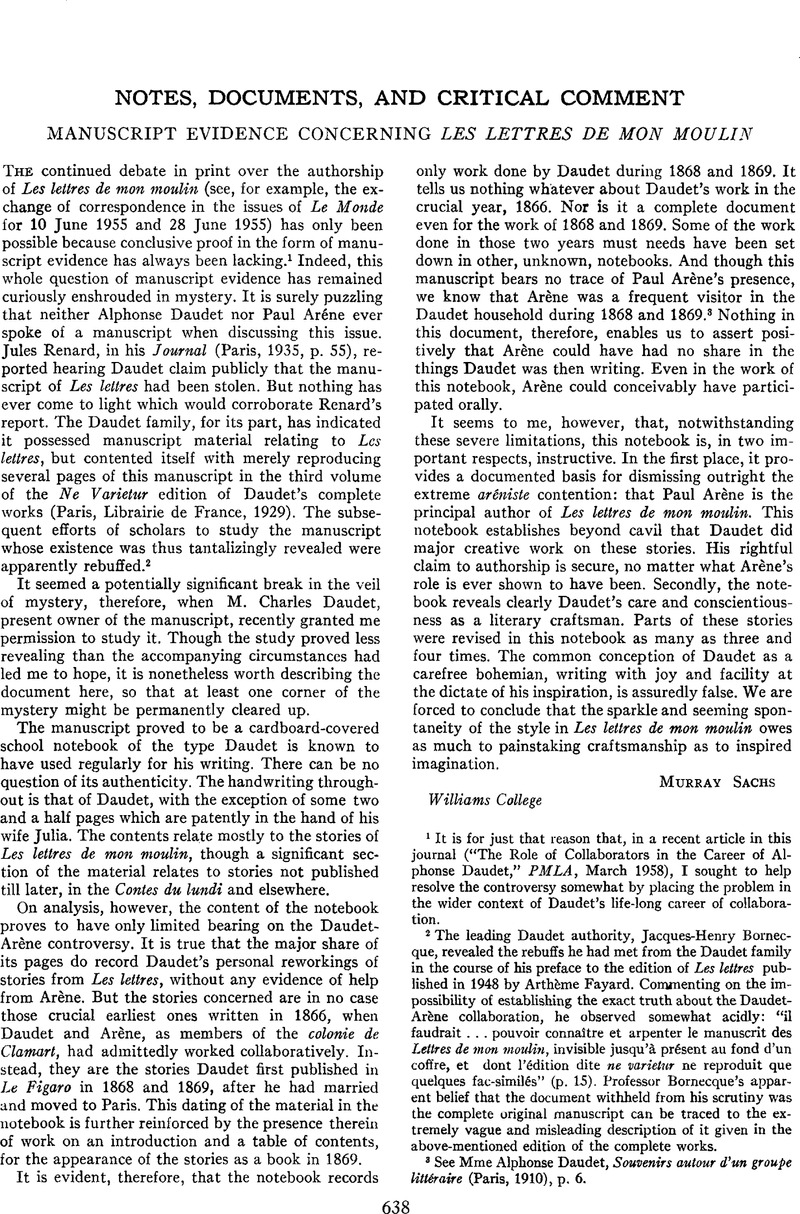No CrossRef data available.
Article contents
Manuscript Evidence Concerning les Lettres de mon Moulin
Published online by Cambridge University Press: 02 December 2020
Abstract

- Type
- Notes, Documents, and Critical Comment
- Information
- Copyright
- Copyright © Modern Language Association of America, 1959
References
1 It is for just that reason that, in a recent article in this journal (“The Role of Collaborators in the Career of Alphonse Daudet,” PMLA, March 1958), I sought to help resolve the controversy somewhat by placing the problem in the wider context of Daudet's life-long career of collaboration.
2 The leading Daudet authority, Jacques-Henry Bornec-que, revealed the rebuffs he had met from the Daudet family in the course of his preface to the edition of Les lettres published in 1948 by Arthème Fayard. Commenting on the impossibility of establishing the exact truth about the Daudet-Arène collaboration, he observed somewhat acidly: “il faudrait . . . pouvoir connaître et arpenter le manuscrit des Lettres de mon moulin, invisible jusqu‘à présent au fond d'un coffre, et dont l‘édition dite ne varietur ne reproduit que quelques fac-similés” (p. 15). Professor Bornecque's apparent belief that the document withheld from his scrutiny was the complete original manuscript can be traced to the extremely vague and misleading description of it given in the above-mentioned edition of the complete works.
3 See Mme Alphonse Daudet, Souvenirs autour d'un groupe littéraire (Paris, 1910), p. 6.


